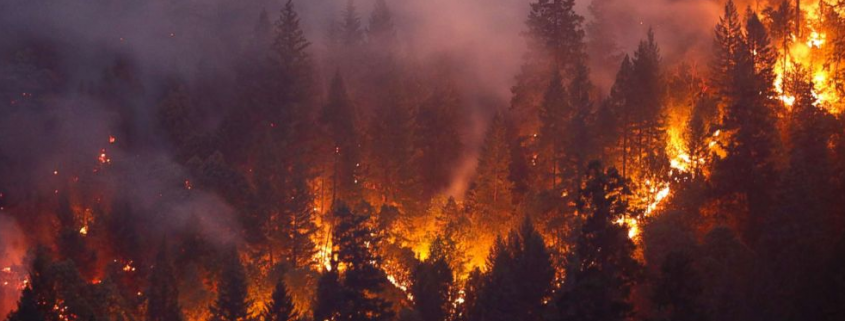PG&E Turns Power Off (a.k.a. Climate Change and the Data Center)
In our October 2018 report, A mission-critical industry unprepared for climate change, Uptime Institute Intelligence urged data center operators and owners to plan for the effects of climate change. We specifically encouraged data center owners and operators to meet with government officials and utility executives to learn about local and regional disaster preparation and response plans.
A recent public filing by Pacific Gas and Electric (PG&E), California’s largest electric utility, underlines our point and gives data center owners and operators in that state, including areas near Silicon Valley, a lot to discuss.
According to The Wall Street Journal, PG&E plans to dramatically expand the number and size of areas where it will cut power when hot and dry weather makes wildfires likely, effectively eliminating transmission and distribution gear as a cause of wildfires. In addition, the utility announced plans to spend $28 billion over the next four years to modernize infrastructure.
Extreme wildfires, arguably a result of climate change, have caused PG&E and its customers big problems. In 2018, PG&E intentionally interrupted service in two different areas, disrupting essential services and operations in one area (Calistoga) for two days. And on May 16, 2019, California confirmed that utility-owned power started last November’s Camp Fire, which killed 85 people and destroyed the town of Paradise.
The utility’s been forced to take drastic steps: In January 2019, it sought bankruptcy protection, citing more than $30 billion in potential damages (including as much as $10.5 billion related to the Camp Fire) from wildfires cause by its aging infrastructure and failure to address the growing threat of extreme wildfires caused by climate change.
PG&E is in the front line but is not unique. The case demonstrates that it is unwise for data center operators and owners to address reliability in isolation. Circumstances affecting data centers in the PG&E service territory, for instance, can vary widely, making communicating with utility officials and local authorities essential to maintaining operations in a disaster and any recovery plan.
In this case, one might identify three distinct periods:
- In the past, when climate change and aging infrastructure combined to gradually increase the risk of wildfire to a crisis point.
- Now, when the bankrupt utility suddenly announced a plan to intentionally interrupt service to reduce wildfire risk, even though the experience in Calistoga suggests that customers and local governments are not prepared for the consequences of emergency power outages.
- Sometime in the future, when PG&E’s major infrastructure investments begin to bear fruit and utility reliability begins to increase.
Each of these stages brings markedly different reliability and cost considerations, depending on how close a data center is to areas vulnerable to wildfires and where (and when) PG&E makes its infrastructure investments.
The full report, “A mission-critical industry unprepared for climate change” is available to members of Uptime Institute Network. Want to know more about this organization? Check out the complete benefits of membership here.



 UI 2021
UI 2021


 2020
2020

 Uptime Institute
Uptime Institute